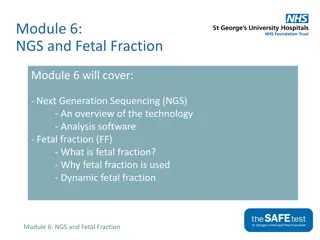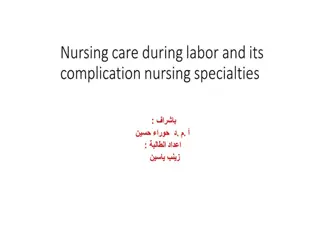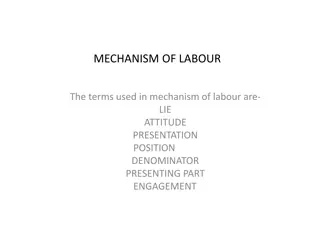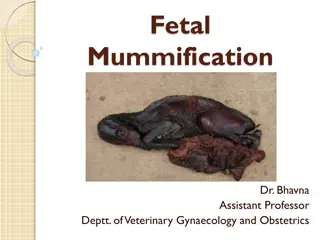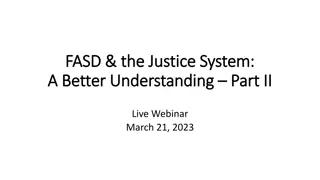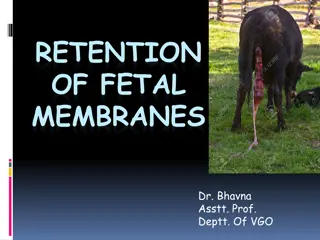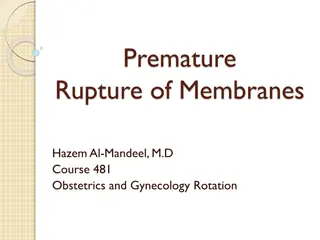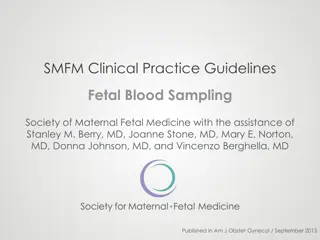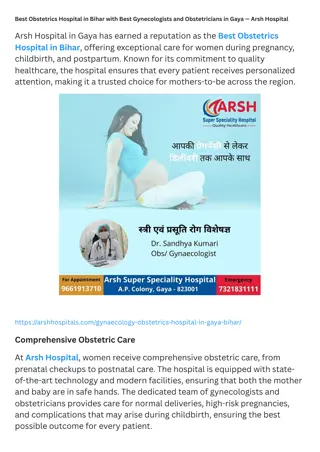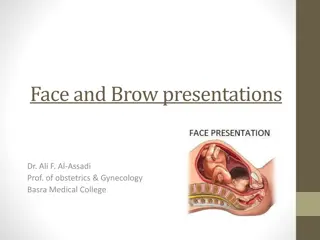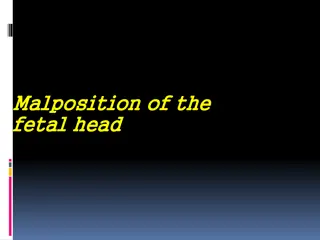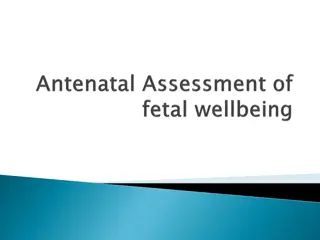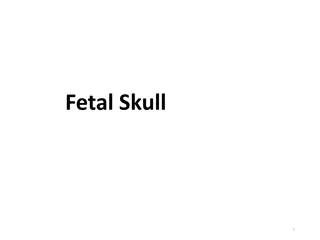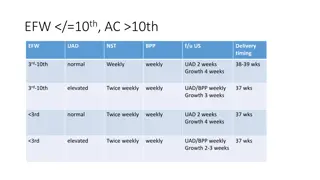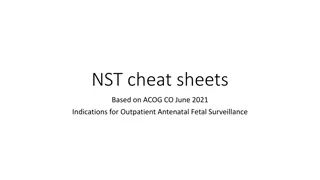Understanding Fetal Malposition and Presentation in Obstetrics
Fetal malposition and malpresentation are important considerations in obstetrics. Malposition involves the fetal head presenting in a non-ideal position, while malpresentation refers to cases where the head is not the presenting part. Detecting these conditions through various signs and examinations during pregnancy and labor is crucial for appropriate management. This comprehensive guide covers the characteristics, diagnosis, and management of these abnormalities to ensure optimal outcomes for both the mother and baby.
Download Presentation

Please find below an Image/Link to download the presentation.
The content on the website is provided AS IS for your information and personal use only. It may not be sold, licensed, or shared on other websites without obtaining consent from the author. Download presentation by click this link. If you encounter any issues during the download, it is possible that the publisher has removed the file from their server.
E N D
Presentation Transcript
Dr. Ali F. Al-Assadi Prof. of Obst. & Gyne. Basra Medical College
Malposition: Is one where the fetal head is presenting but not as a well flexed vertex with the occiput in the anterior quadrent. Malperesentation: Includes conditions where the fetal head is not the presenting part.
20 % of cephalic presentation during early labour. The sagittal suture is in one of the oblique diameter usually the right.
The head can enter the brim in the direct OP position when the fetus is small & the pelvis is capacious or when a large fetus engages in a pelvis which has a brim which is longer anteroposteriorly than transversely. Anterior sited placenta. Deflexed head brigma meet the pelvic floor resistance & rotate anteriorly.
A- During pregnancy: Is of no importance except it might be a cause of non- engagement. B- During labour: 1- suspicion made if the patient develops early rupture of membranes with poorly engaged head. 2- Abdominal examination: slight flattening of the lower abdomen, the limbs are easily felt & the back is difficult to be felt with difficulty to hear the fetal heart.
3- Vaginal exam.: high presenting part early in labour, easy to feel the ant. Fontanel behind the pubis. Late in labour there may be moulding with caput succedaneum over the presenting part.
70 % :spontaneous rotation to OA. 10 % : short rotation to direct OP position & delivery as face to pubis. 20 % persist as R or L OP where assisted rotation will be required. Prolong 1st& 2ndstages is a feature.
Managed as in a normal case; nothing can be done to correct the abnormality. Partogram. Epidural anesthesia. Augmentation should be done if there is no satisfactory cervical dilatation & if this doesn t result in better progress in few hours CS is performed which is also indicated for fetal distress.
Diagnosed by VE. The degree of flexion & position of the head are determined by palpation of the fontanels, Continue deflexion, large caput & marked moulding suggest that spontaneous rotation may not occur. With good uterine contractions & good maternal expulsive forces, spontaneous rotation & normal delivery takes place. In 10 % delivery in face to pubis & this carries a greater risk of perineal tear.
Interference is indicated in cases of: 1- Failure of decent. 2- Fetal distress. 3- Maternal distress.
1- Manual rotation & forceps delivery. Requires GA or epidural. 2-Kjellands forceps.( Rotation & traction) 3- Vacuum extractor.
Is arrest in labour when the fetal head has descended to the level of the ischeal spines & the sagittal suture lies in the transverse diameter of the pelvis.
The condition is only diagnosed during the second stage of labour. The occiput may have been obliquely posterior at the onset of labour & only partly rotated foreword, or It may have descended from an initial transverse position. In android pelvis the head fails to descend to the pelvic floor, where rotation normally occur.
By vaginal exam during the second stage when progress of labour ceased, the head arrested at the level of the ischeal spines, with sagittal suture at the transverse diameter of the pelvis.
1-Augment inefficient uterine contractions with oxytocin. 2-Rotation & traction as with OP.




